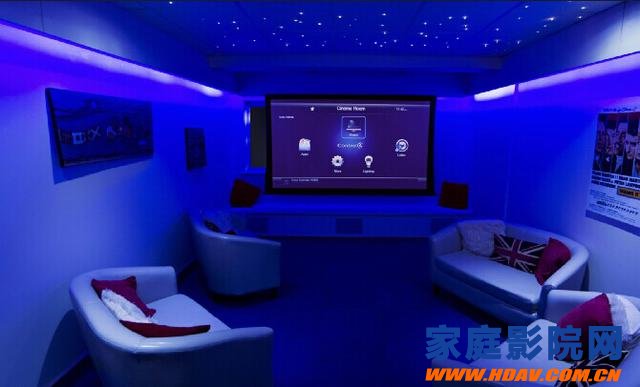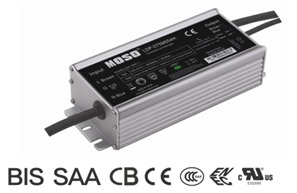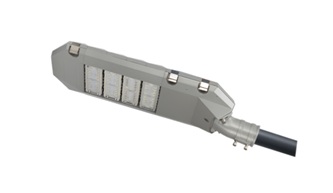[Home Theater Network] We believe that the decoration of the home audio-visual room will be a new topic in home decoration for most families. For most families, the living room is used as an audio-visual room, and a larger TV set is placed. Then a set of brand audio is the prototype of the home theater system, but with Blu-ray Full HD, 4K Ultra The improvement of high-definition image quality, as well as the introduction of new sound standards such as Dolby Atmos, DTS X, etc., in order to realistically reproduce the effect of the film, a professional audio-visual room has become the demand of some high-end consumers. Therefore, today I will talk about the need to pay attention to creating a professional home audio-visual room. Space selection In theory, the family independent audio-visual room is preferably built in a rectangular room with an area of ​​20 to 30 square meters (4m × 5m or 5m × 6m will be a good ratio of space size). In this rectangular space, usually the short side is used to place the projection screen, so the length of the short side must be sufficient to install the projection screen. Different brands of curtains, the maximum shell size will vary. Under normal circumstances, the size of the screen installed in the home is about 100 to 150 inches. Because we need to reserve the width of a pair of main speakers on both sides of the screen, it is not too crowded, and the short side width of about 4 meters will be It is an ideal choice. The long-side dimensions of the audio-visual room need to meet both subjective and objective factors. The objective factor is determined by the projector you are going to purchase. Simply put, if you're going to install a 100-inch screen, then we have to know the projection distance required for the projector to be purchased to project a 100-inch screen. However, it should be noted that this distance is not the shortest distance required for the long side of the room. We also need to add the length of the fuselage body and the necessary distance to connect the cable behind the fuselage. We can come up with a calculation formula like this: The minimum length of the long side of the viewing room = the minimum distance required for the projection of the projector + the length of the fuselage + the size of the space behind the fuselage. So what is the subjective factor? It is the comfort of the human eye. According to our experience, for a person who has never watched a projection, the first time I watch a 100-inch projection screen, the viewing distance will be comfortable around 4.5~5m. Over time, the viewer is used to this. After watching the movie, watching a 100-inch or larger screen at around 4m will not cause much problems. Important notes on the decoration of the audio-visual room Many people think that the decoration of the audio-visual room is not much different from the decoration of the ordinary room. This is a big misunderstanding. 1. Choose a reasonable in-wall audio and video cable For most home audio-visual rooms, the use of in-wall wire installation is the only option. Due to the non-replaceability of the wire in the short term, it is essential to spend more money to select high-quality wire. HDMI cable will be the main audio and video transmission medium in the future. High-quality HDMI cable that meets at least the requirements of version 1.4 is indispensable. If you consider the need to upgrade 4K theater in the future, you have to choose HDMI2.0. HDMI cable. And even if the budget allows, it is even recommended to deploy two HDMI cables to do redundant backup of video transmission. The embedding of audio cables is relatively simple. Follow the principle of one in the end and not indifferent. Use high-quality audio cables with more than 300 cores to bury them in the position where you need to place or wall-mounted speakers. The pure power supply plays a very important role in the excellent performance of the audio-visual room system equipment. As far as possible, it provides a separate wall seat for each electronic equipment in the audio-visual room. If the requirements are stricter, the power distribution line from the household is provided. Pulling a separate power supply line to the audio-visual room (best-core copper cable with a cross-sectional area of ​​20mm2 or more is the best) can effectively improve the interference generated by the sudden start of other high-current equipment in the home network. It is the electronic equipment in the audio-visual room that has a very good current supply. 2. Choose to handle the wall color and minimize the effect of indoor light reflection on the video effect. Under the action of the light bulb, the projector projects a video image onto the screen to form a picture. After the light emitted from the projector is projected onto the surface of the screen, it will also reflect and diffuse to the wall near the screen, and the light passes through the wall again. The reflection of the surface, some of which may enter the viewer's eyes, and the other part may be reflected to the projection screen again. In order to achieve the best viewing effect, it is necessary to find ways to eliminate the effect of the diffused or reflected light on the image. Interference. In fact, looking at the practice of the cinema, it is very simple to solve this problem. Use a wall paint or wallpaper that is all black or nearly black (such as dark green) around the projection screen to keep the surface of the wall rough. can. 3. Sound insulation problems of the audio-visual room to the outside world Sound insulation is actually a double meaning: the sound in the audio-visual room is not allowed to pass out, and the external sound is not allowed to be transmitted into the audio-visual room to affect the internal effect. The general method of sound insulation is first of all the treatment of the wall. The sound insulation of the wall is very simple. The wall surface can be used as the wooden keel + stuffed cotton + multi-layer gypsum board. The gypsum board can also be considered with a soundproof rubber pad to achieve good sound insulation. Followed by the handling of the door. The sound insulation of the door is slightly more complicated. If you choose the ordinary door that is sold in the market, you need to stick the soundproof felt + soundproof cotton and the outer wrap behind the door. You also need to seal the door cover with the same sealing and wrapping. The strip ensures that the door is tightly connected to the door sleeve for sound insulation. Therefore, it is possible to adopt a method of making a hollow solid wood door on the scene for the audio-visual room, and then internally filling the sound-absorbing cotton and wrapping the sound-absorbing felt on the outside. The sound absorption effect achieved in this way is better. Finally, the handling of the ceiling. The ceiling is a place that is easily overlooked in the soundproofing of the audio-visual room. The treatment method is relatively simple, and the wooden dragon skeleton can be added with sound-absorbing cotton. 4. Sound processing inside the audio-visual room After completing the first three steps, you need to make a fine adjustment to the internal sound effects. In the sound adjustment inside the audio-visual room, it is necessary to pay attention to adjusting the balance of the sound and the interference of the standing wave. The balance of the internal sound is adjusted so that the sound heard in the interior of the entire listening room, whether in the front or rear seats, does not change much. To do this, in a nutshell, use a sound absorbing panel at the reflection position where the front sound intensity is relatively large, and then add a diffusion plate at the rear and the top to achieve sound balance in the entire space. Generally speaking, the sound absorbing panel is recommended to use a polyester fiber sound absorbing panel of 9 to 10 mm thick, and the substrate is made of ultra high density board; the diffusing board is recommended to adopt a fir material and strictly conform to the standard residue standard QRD diffusing plate. In addition to the use of the diffuser, the more diffused materials used on both sides of the wall, the back wall of the speaker, and the back wall of the listening position, the more you can feel the sense of space in the music venue. With the broad, extended natural and loose high-frequency performance, the details of the music can be greatly increased, and some of the weak dynamic changes that are usually difficult to detect are now as if they are vivid. If purely from the design and processing of audio-visual quality, the use of "diffusion" materials must be as good as possible, and have a good auxiliary effect on the improvement and improvement of sound. The low frequency traps that need to be exploited for annoying standing waves. Standing waves are usually formed because sound waves are reflected between opposing faces in a closed room (the opposite faces are opposite walls, including left and right, front and back, and ceiling and floor). Stop the vibrating resident sound waves, they usually stay in the corner of the room, so consider placing a low-frequency trap at the four corners of the room (in fact, a box made of MDF filled with sound-absorbing cotton). The size and shape of the low-frequency trap determines the frequency at which it can be absorbed by the standing wave. This requires professional measurement and professional production. It is best to ask the professional audio-visual room design company to help measure and design. Perhaps you read the above content will feel complicated, high and deep. In fact, if my original intention is not to let you personally do it, but to let you have a general understanding of this knowledge, as for the specific solution or construction, I still recommend that you go to the professional audio-visual room design company to help, Because they have more professional knowledge, construction experience, and more importantly, design companies that are good at adjusting images and sounds can fully utilize all the performance of audio and video equipment, and let the audio-visual experience take it to the next level. Of course, if you are not familiar with which companies are more professional, you can ask us.
MOSO dimmable LED Driver is designed for various types of exterior or industrial LED lighting, including LED roadway lighting, LED street lighting, LED flood lighting, LED highbay lighting, LED high mast lighting, LED architecture lighting, etc. The driver is compliant to all 0~10V and PWM dimming controllers, dimming systems, and smart control systems.
All dimmable LED Drivers comes with compact size and IP67 protection. So the same driver can be used for independent or built-in a waterproof power supply chamber. There is no limitation of the IP rating of the luminaire housing.
The ProgrDimmable LED Driver operates in constant current model. There are two types dimmable LED drivers available in MOSO: 1) Programmable Dimmable LED Driver, or constant current dimmable LED driver.
A programmable dimmable LED driver can be monitored by an infrared-based programming device, to deliver different output current and voltage values to LED modules. With one driver, you can use it for different light fixture designs. The fully programmed drivers offer all dimming options (0-10V/PWM/Timing
A constant current dimmable LED driver will only deliver fixed output current, you are not able to change the Iout like a programmable driver. The driver is competible with 0-10V / PWM / DALI dimming prootcols.
The compact metal case and high efficiency
enables the power supply to operating with high reliability, and extending
product lifetime to at least 50,000 hours. Overall protection is provided
against lightening surge, output over voltage, short circuit, and over
temperature, to ensure low failure rate.
MOSO grants the product with 5 years global warranty. Customer can refer
to Warranty policy, find the closest MOSO distributors or sales
representatives, to get a local replacement in case of any failure.
Dimmable LED Driver Dimmable LED Driver,Dimmable LED Lighting Driver,Dimmable Slim LED Driver,Dimmable Tunnel Light LED Driver Moso Electronics , https://www.mosoleddriver.com




control/DALI) and a wide range of output current in a single driver, which
deliver maximum flexibility with customized operating settings and intelligent
control options for lighting manufacturers. The Programmable dimmable LED drivers obtained many global safety certifications,
including UL, CE, TUV, ENEC, CB, SAA, BIS, KC, etc, they are compatible with the safety regulations
in different countries.